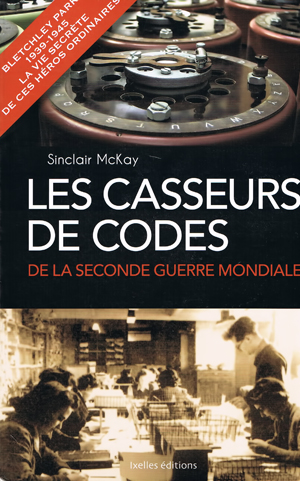Erik Orsenna’s “La Terre a soif”.

I appreciate Erik Orsenna for his erudition, his Cartesian thinking, his poetry and his ability to find the detail that will amuse the reader while informing him. In his book, the author tackles with equal comfort a wide variety of themes relating to history, religion, philosophy, the environment, climate change, renewable energy, pure science, politics and economics.
Being first and foremost a man of the field, he quickly recognized the need to develop and maintain political contacts in many countries in order to facilitate his travels in areas often considered problematic. The reader benefits from this privileged access.
In “La Terre a soif”, he presents us with portraits of thirty-three rivers around the world. The list is not exhaustive, of course, because after years of travel and observation, he was pressed by the publisher to produce his book. I know that if it were up to him, he would still be on the road accumulating information, each more interesting than the other.
Here are some of the rivers discussed in this book: Mississippi, St. Lawrence, Loire, Nil, Congo, Ganges, Mekong, Colorado and even Panama’s two rivers. The smallest of the rivers mentions in the book flows in Brittany, France and is called Trieux, while the largest is the Amazon in Brazil.
With some of the more powerful countries like China, or Israel and a few others, negotiating for the equitable administration of a river is difficult. The dams built by a powerful country reduce the flow downstream and the smaller surrounding countries make do with what is left. Water harvesting also dries up land over long distances, affecting agricultural production.
Navigation on waterways must also adapt to the reduced flow. One example is the Panama Canal: [DeepL translation]: “ The lack of water is the great fear of Panama. We remember that the heart of the canal is the great Gatún Lake. If it were to dry up, the ships would run into rocks and sand: they would no longer be able to transport their cargo from one sea to the other. Trucks would have to take over”. (p.252)
In contrast, the author shows that there are ways to administrate a major river so that it benefits the riparian countries. He cites the management of the St. Lawrence River by the United States and Canada as an example.
Contrary to what one might think when it comes to the environment and water scarcity, not everything in this book is negative. On the contrary, Erik Orsenna has understood that the reader is tired of alarmist statements. The author has therefore designed a very well-balanced book where it is possible to make the reader’s thoughts evolve without the latter feeling the need to take an antidepressant at each chapter.
Title : La Terre a soif
Author: Erik Orsenna
Edition : Fayard
© 2022
ISBN : 978-2-213-72075-3
The secret life of Bletchley Park
This book is about the daily operations and lifestyle of the people who worked at decoding German messages in Bletchley Park, England, during the Second World War. The reader quickly realizes the incredible impact of the shadow workers on major battles like the England Battle, El Alamein or eventually the D-Day. Moreover, it allows the reader to enter the Park’s installations to witness the rigor and professionalism of the men and women who worked day and night, through high tension and exhaustion, to accomplish their duties.

Their efforts to obtain results bordered with obsession. Even while sleeping, brains were at work. A major breakthrough happened after a researcher woke up in the middle of the night with a long awaited solution. Naturally, names like Alan Turing, John Herivel or Dillwyn Knox are repeated on a regular basis. But they are just a few in a crowd who played an essential role.
Bletchley Park was highly efficient for many reasons:
1. A wise combination of employees with diversified training and capabilities. A wide cross-section of abilities and general culture were sought after. Women and men working at decoding were gifted with a highly superior intelligence and focusing capacity. Multiple fields of knowledge were required: there were experts in mathematics as much as in history, classical letters or linguistic. Dillwyn Knox, one of the Bletchley stars, was himself an expert in old papyrus. The combination of intelligence resulted in important innovation.
2. The ability to keep a secret: the employees were scrupulously screened and could not walk in any other buildings than the one that they were assigned for their work. If there had been a mole in one of the buildings, that person would not have been able to have a physical access to other buildings to try to acquire secret information. A common goal and a deep understanding about the importance of their sole objective helped the staff to deal with fatigue and keep the unavoidable personal conflicts under control. The discretion about the operations at Bletchley was even maintained by the employees after the war was officially over.
3. A special treatment for the code breakers: even if Bletchley Park was officially created for military purposes, there was no strict military regime implemented: [my translation] “Throughout the years and centuries, we observe that British intelligence is partly a military affair, but is mostly managed by talented civilians”. The code breakers needed a special treatment: [my translation] “It was deemed very important that the “experts” benefitted from enough space and liberty so that their brilliant thinking could be used at its full potential”. They did not have to deal with restrictions and discipline applied to other employees. This objective to avoid useless pressure on highly skilled employees has been repeated in successful international companies aimed at innovation.
4. Collaboration between countries: it is important to mention the essential collaboration between Poland, England and France at gathering results aimed at cracking the Enigma code. Up to the moment that France was defeated, all the found solutions were shared. Besides, Polish cryptanalysts where the first to decipher the codes on the first version of the Enigma machine, results that were shared with the two other countries.
5. The importance of the chance factor in the success of the operations: the chance factor would eventually play a key role in the ability for Bletchley Park to maintain its operations for a prolonged period. In spite of the intense German bombings, very little damage was inflicted to the buildings where the code breakers were working: [my translation] “We owe it to a miracle that only two bombs fell on Bletchley Park […]. Moreover, another bomb fell near the site where Knox and Lever were working, but it never exploded”. Furthermore, two other bombs fell on the Park, also without exploding.
There were nonetheless obstacles to efficient operations. These included the existence of useless levels of administration: primary information starts to be transformed as soon as it is passed to another level for interpretation. The more levels there are, the more the message is transformed. Some people become masters at protecting their own status and job and eventually become superfluous. Because of their higher status, they are harder to dislodge. This situation could not be avoided at Bletchley Park: [my translation] “Our working place is actually overcrowded by intelligence officers who mishandle our results and make no efforts to double check their arbitrary correction”.
A book passage that particularly touched me was the story of three British sailors who swam up to a slowly sinking U-Boat, the U-559, and helped protect and bring back a four rotor Enigma machine (the most complex version) as well as all the Stark keys used with the machine. The two sailors who entered the U-Boat drowned as they had insufficient time to get out on time. The third sailor, who had stayed outside, was able to bring back all the secret material (wisely placed in a sealed bag) to his ship. To get a hold of this Enigma machine and all its keys would be deemed of capital importance to help neutralize the German forces on the oceans.
I conclude with a quote from Mavis Batey which resumes quite well the state of mind of the people who worked at Bletchley Park: [my translation] “You do things or not, but if you don’t act, nobody will do it at your place”.
©2012 Ixelles Publishing SA
ISBN 978-2-87515-178-0
©Sinclair McKay 2010 (author), original English title: The Secret Life of Bletchley Park